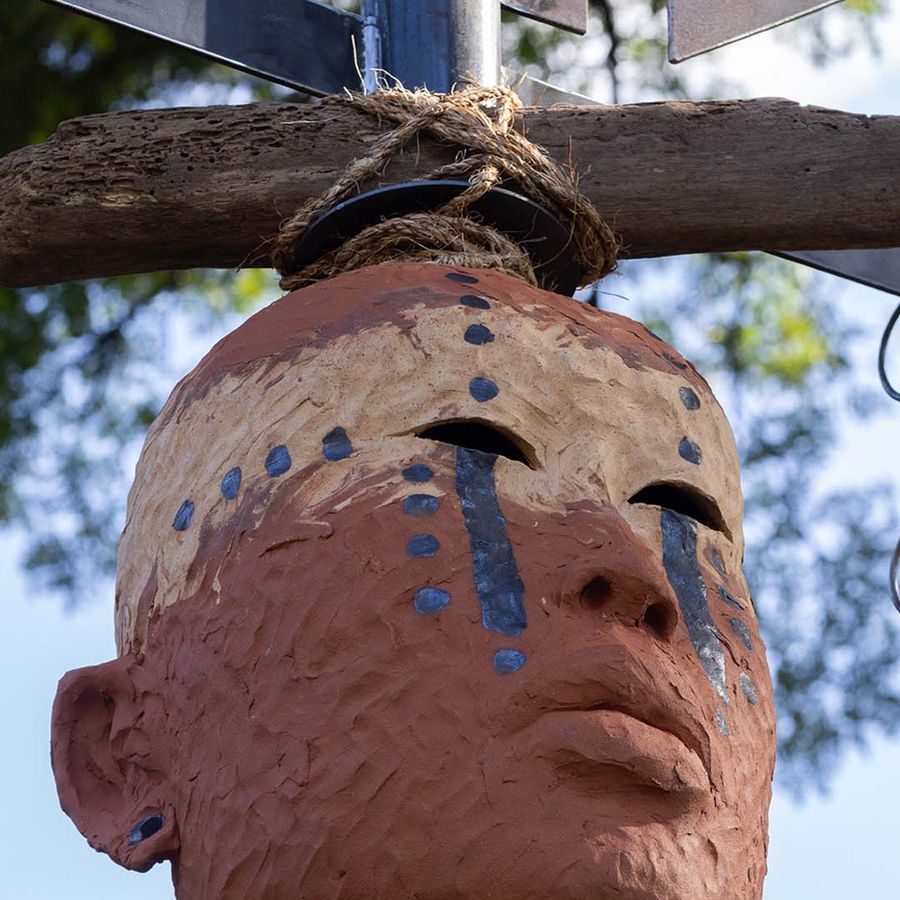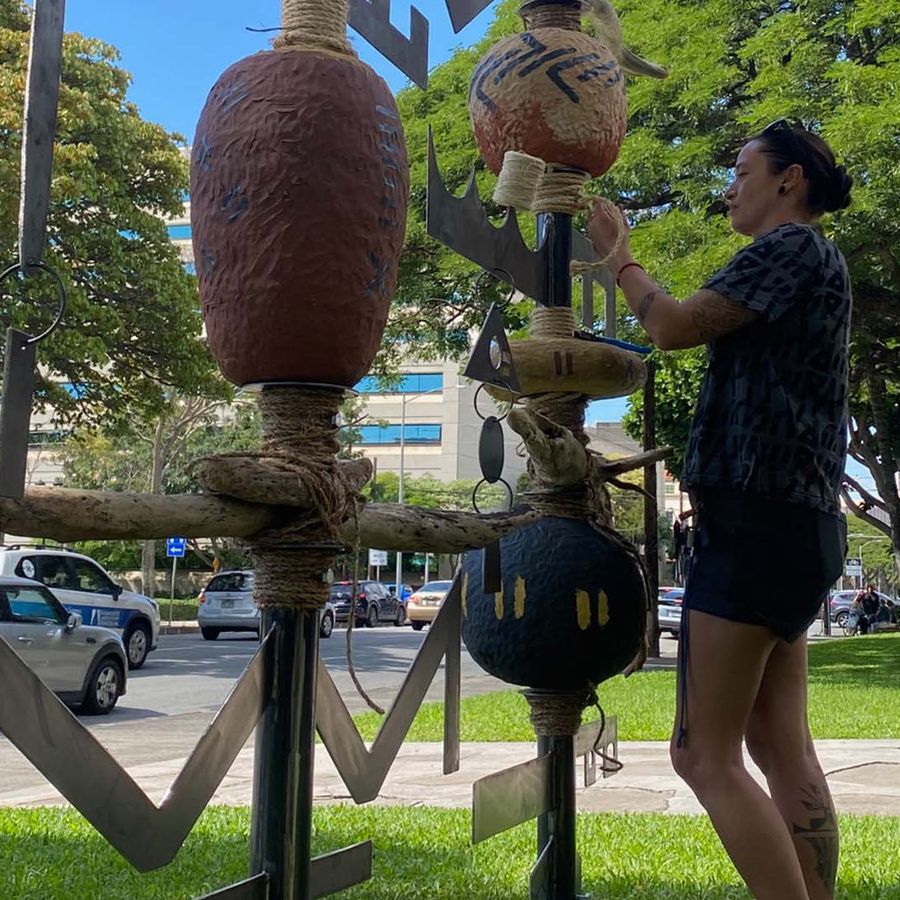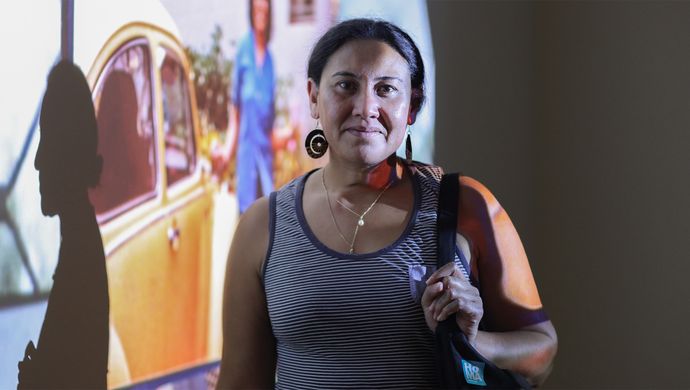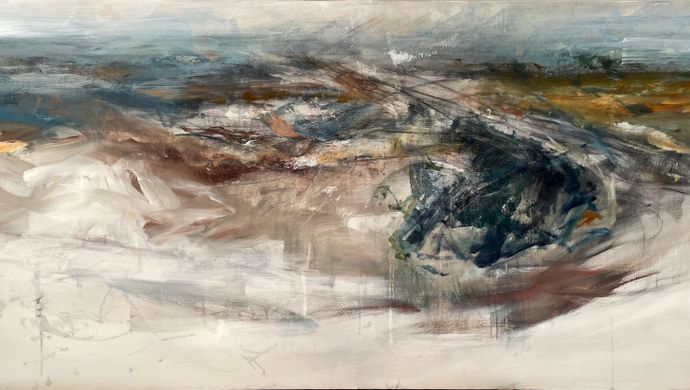HT25 at HoMA: Rose B. Simpson pays respect
“I was thinking about how we can exist in close proximity with each other respectfully,” Simpson says of the work. She points out that the large beads “were made to almost intersect—they could potentially hit each other, but are spaced so they don’t. They dance with each other. How do we stand shoulder to shoulder and still be self-aware of how we affect the world around us?”
In 2003, the Tewa sculptor of Santa Clara Pueblo in New Mexico spent time on Kaua‘i. She was there to assist her mother, artist Roxanne Swentzell, who was creating a sculpture for the entryway of the National Museum of the American Indian. She worked in a converted milking room of the former Meadow Gold Dairies. “So one of the reasons I wanted to be a part of [Hawai‘i Triennial 2025] is that I have a really deep love for this place and a history here,” says Simpson. For A’gin, Simpson again spent time in Hawai‘i—she fabricated the metalwork at the University of Hawai‘i metal fabrication and foundry facility last fall.
Simpson worked in steel, wood, clay and fiber for A’gin. “I felt it was important to include these elements because of what they offer. Metal being precise and sharp and mechanical and industrial, and the clay expressing the emotional aspect of ourselves. The wood being the relationship to place,” explains Simpson. She incorporated driftwood that she found, “being very much like all the people who are visitors and we welcome from somewhere else. How do we carry ourselves, be guests respectfully in all those spaces?”
Place is important to Simpson. “For Indigenous people, spirituality and consciousness is very much related to place. Every culture that has that type of relationship to place has struggled with the extractive nature of colonialsm and how that continually perpetuates itself in our lives and bodies, all the way down to our thoughts,” she says. “I feel really strongly about how we as humans on this planet can begin to transform this reality that we’re in because it hasn’t been healthy for a long time.”
A’gin gracefully embodies the triennial theme ALOHA NŌ, a call to know Hawai‘i as a place of rebirth, resilience, and resistance; a place that embraces humanity in all its complexities. You can see the work of seven more artists at HoMA, then explore ten more O‘ahu sites that feature the works of 38 more exciting artists and art collectives. And for the first time, the Triennial has expanded to Maui and Hawai‘i Island too.



 Story
Story




